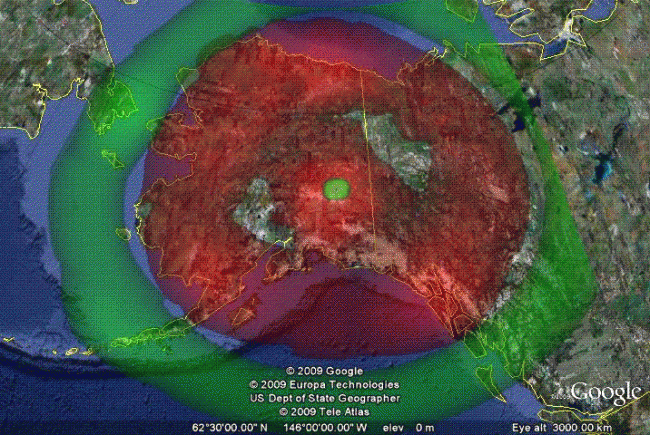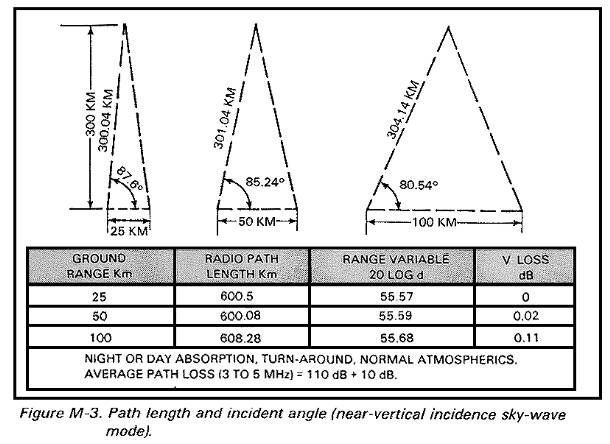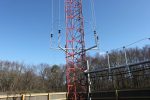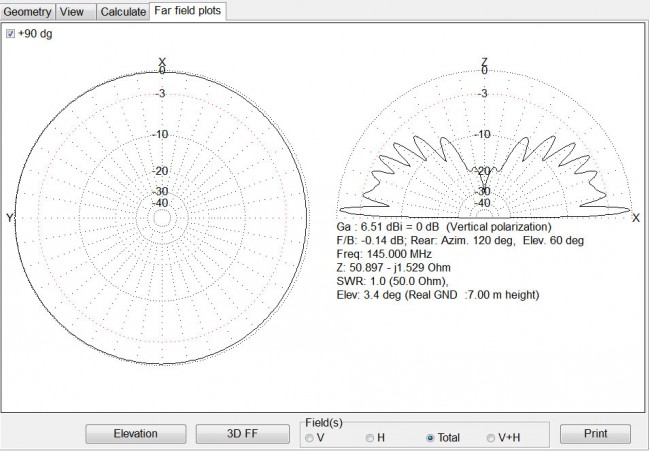WE2XRH looks like an Amateur radio call sign but it is actually the call sign of an experimental short wave station in Alaska. Transmitting DRM on 4.85 MHz, 7.505 MHz and 9.295 MHz with a Near Vertical Incident Skywave antenna system, they hope to cover all of Alaska and almost nowhere else with shortwave broadcast.

This license was granted for two years in August of 2008 and renewed again this September until July 2012. According to the website Nextgov.com:
The company told FCC that its initial tests would be funded by and conducted for the Defense’s Joint Electromagnetic Technologies program, a classified operation whose mission is to develop technologies for use by special forces and intelligence units.
Defense also will supply surplus transmitters from the closed, Cold War-era Over the Horizon Radar, located in Delta Junction. The radar system bounced shortwave signals off the ionosphere to detect aerial targets, such as Soviet bombers, at ranges up to 1,800 miles.
The transmitters are 100 KW Continental HF units, which for this applications are running about 20 KW. According to this Yahoo Groups posting, several Japanese shortwave DXers have received the station in late 2009, but nothing recently. I shot an e-mail off to their information address, but did not receive a reply.
On High Frequency (HF) NVIS has been used for several years where line of sight VHF communications are not possible. Soldiers during the Vietnam war noticed that if a vertical whip was bent over so that it was horizontal to the ground, the signal strength was slightly less but the signals were much less prone to fading.

In this case, WE2XRH is using a crossed dipole antenna which generates a circularly polarized field. With traditional HF skywave, polarization is not a factor since the ionosphere usually causes some field rotation anyway. It is interesting that the system had this design consideration.
The NVIS is a novel approach and it may work on Medium Frequency (MF) during the night time, but daytime coverage would still have to rely on ground wave signal. The FCC has historically approached MF skywave as a secondary and unreliable transmission method. The idea being to reduce the antenna take off angle to as low as possible, hence the popularity of taller than 90 degree towers. There is good validity to that practice as mixing the ground wave and skywave components at a receive antenna will cause multipath fading.
Setting aside a new broadcasting frequency segment, say 1.6 – 1.8 Mhz, a system could be designed to transmit DRM by using groundwave during the day with a traditional 90 degree tower, and NVIS at night with a horizontal dipole antenna. Then never the two should meet. The night time NVIS system would have a small ground wave component, out to a couple of miles. In addition to that, the night time NVIS system can run on an adaptive power system, when propagation conditions are poor, more power can be applied to the antenna input and in better conditions, power reduced in accordance with a remote receive monitor that reports the Bit Error Rate (BER) back to the transmitter controller.
The best NVIS antenna is the 1/2 wave dipole positioned between 0.1 and 0.2 wave lengths above ground. In the 1.6 to 1.8 MHz band, that equates a half wave dipole antenna 260 to 292 feet long mounted between 66 to 90 feet above ground level.
This would have many advantages over the current directional antenna based MF broadcasting system currently deployed. The current system is based on pushing potential harmful signals away from a station that was licensed to the same frequency (or an adjacent frequency) earlier. This puts the onus for proper operation on the broadcast license holder. Most don’t have the know how or resources to insure that a n AM directional is operating properly. I would estimate at least half of the directional AM antennas in this country are out of tolerance. With a NVIS based night time antenna system, coverage areas would be assigned much like an FM allotment.
The BBC conducted medium wave DRM tests in 2007 with satisfactory results during the daytime, but poor reception at night time due to co channel interference. That is why DRM will not work on the current AM broadcast band and if digital radio is to be broadcast on MF, a new frequency band would be needed.






Interesting comments about the 1.6-1.8 meg band and skywave. There have been proposals to use this band internationaly. Pie in the sky: I don’t know but take a look.
http://www.acma.gov.au/webwr/_assets/main/lib311181/power_broadcasting_ifc06-09_fyso.pdf
@Rob, That is a very interesting read. My experience on Guam (13N 144E) was that MW did not work too well in the tropics, but, I was there during the solar maximum on 1990 so things may be different now. The MW rombic will take up a huge piece of real estate, especially if a reflector screen is added. I would be interested to see if this idea gets any traction.